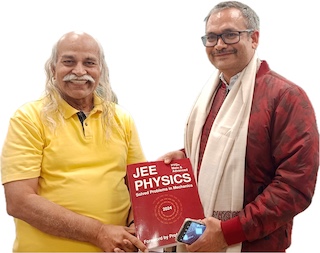Measuring viscosity
Viscosity is counterpart of friction in liquids. When one layer of a liquid attempts to slip over the adjacent layer, there are forces by the layers on each other to oppose the relative possible velocity. Essentially it opposes the velocity gradient in a liquid (or a gas). The effect is measured by ``Coefficient of Viscosity''.
One standard way to get the viscosity of water is to let it flow through a narrow tube, and use Poiseuille equation \(\frac{\mathrm{d}V}{\mathrm{d}t}=\frac{\Delta P \pi r^4}{8\eta L}\), where \(\frac{\mathrm{d}V}{\mathrm{d}t}\) is the volume of water coming out of the tube per unit time, \(\Delta P\) is the pressure difference across the tube, \(r\) is the radius of the tube, \(L\) is the length of the tube and \(\eta\) is the coefficient of viscosity.
You need a bottle with a plastic tube fixed at bottom, a syringe barrel closed at its tip, a stop watch, a screw gauge, scale.
- The tube fixed in the bottle is the plastic sleeve over electric wires. We are giving you the wire removed from the sleeve. Assume that the inner diameter of the tube is equal to the diameter of the wire. Measure the diameter of the wire to get the radius \(r\) of the tube.
- Measure the length \(L\) of the tube using a plastic scale. We have put a mark near the neck of the bottle. Measure the height of this mark above the tube. You will be putting water in the bottle up to this height and then \(\Delta P\) will be equal to \(h\rho g\).
- Close the tube with one hand and pour water in the bottle up to the mark. Release the tube. Water will start coming out from the tube. Start collecting the water in the syringe and at the same time start the stop watch. Collect water up to say 3/4 of the syringe and stop the stop watch. Note down the time and the volume of water collected. This gives \(\frac{\mathrm{d}V}{\mathrm{d}t}\).
- Now you can put everything in Poiseuille equation to get the coefficient of viscosity \(\eta\).
- Repeat at least 4-5 times to get the average and variation in \(\eta\).
Related
Subscribe to our channel
